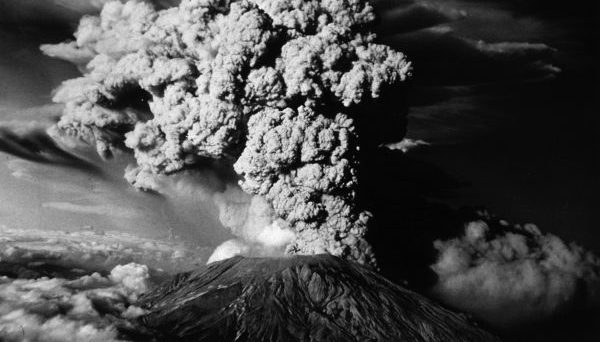
Thirty-seven years after Mount St. Helens erupted explosively with a massive landslide that took off the top of the picturesque peak in Washington State’s west-central Cascades, a report on ABC News suggests the volcano is “recharging” as the Evergreen State observes the anniversary of the May 18, 1980 cataclysm.
The most recent eruption was nine years ago, ABC said. Now, according to the Pacific northwest Seismic Network, a “swarm of earthquakes” has occurred since the 2008 event. The story says that “swarms of deeply originated earthquakes, not even felt on the Earth’s surface, have been detected in March through May 2017.”
A Facebook post four days ago asking “Where were you when the mountain blew” has received many responses, ranging from people who were in the military overseas to one woman who had not yet been born.
The 8:32 a.m. eruption killed at least 57 people, took out dozens of bridges and an estimated 200 miles of roads and highways. It leveled thousands of acres of private, state and federal forest land, turned the Toutle River into a roiling mudflow, and sent an ash cloud tens of thousands of feed into the air and across several states. Among the dead were the irascible and salty-tongued Harry Truman, owner and operator of a lodge on Spirit Lake, geologist David Johnston, who had been monitoring the volcano from a ridge north of the peak, and professional photographer Reid Blackburn.
St. Helens had been a majestic gem of the Pacific Northwest, compared occasionally to Japan’s Mount Fuji. It was one of Washington’s “Big Four” that also includes Mount Adams, Mount Rainier and Mount Baker.
As volcanic eruptions go, Mount St. Helens was a corker; quite possibly the worst volcanic disaster in U.S. History, according to ABC. What had been Spirit Lake was essentially destroyed by the landslide that took off more than 1,000 feet of elevation. Where the mountain’s elevation had been 9,677 feet, it was reduced to 8,363 feet after the blast that created a mile-wide crater.
In the aftermath, tens of thousands of acres of public lands were closed for several years. Nowadays, people are allowed to climb the mountain, and there is a trail that goes around the peak. Millions of dollars were spent rebuilding and improving roads in the Gifford Pinchot National Forest, and the mountain is once again a popular tourist attraction.
In recent weeks there have been several small earthquakes in the Puget Sound area, but the increase in seismic activity does not appear to have raised many alarms among the population.
Related:
Embattled Seattle Mayor Murray Drops Re-election Bid
Seattle Police Chief’s ‘Gun Violence’ Remark Stirs Hot Water